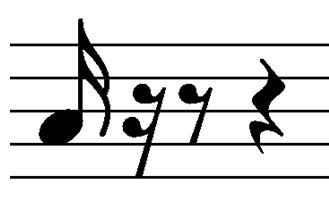Welcome back to our lessons. Yes, it’s been a while but we can assure you that your wait is worth it. Your online piano lessons have never been this easy. The first part is just the beginning. Get your fingers flexed and ready your mind and body for you piano lessons. Did you miss it then just click HERE.
Part 2
Piano Notes Values.
In this part of our online piano lessons, you’ll learn how to read and understand the piano note values. They are very important to learn for easier piano sight-reading and piano playing.
Every piano note you see in a piano sheet music has its own value or count. This count defines the beat and the music rhythm of the song. A piano sheet music can be either a fast song or a low song depending on the piano note values and the time signatures, which will tackle in our next lessons.
It also defines how long you should play a certain piano note : if it should be in four (4) beast or just one beat.
Here they are:
A semibreve, popularly known as a whole not has 4 counts or beats. Meaning you have to lay the note for 4 counts.
Then there is the dotted minim or the dotted half note, which counts for 2 beats.
A crochet on the other hand or the quarter note only have one beat. It looks like a dotted minim without the dot.
Another piano note is the quaver or known as the eight notes. It says that a certain piano note should only last for a half beat.
And the last piano note you should remember is the sixteenth note or the semiquaver note. This note counts for a quarter a beat only and usually seen in fast songs.
These piano note values are important and must always be in your mind for easier piano sight-reading. There are many more parts of the piano sheet music so stay tuned for your next free piano lessons.







